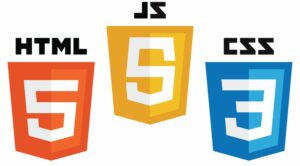HTML, CSS, and JavaScript are the foundational trio that constitutes the backbone of web development. Each plays a distinct role in crafting the visual and interactive aspects of websites. In this article, we’ll dive into the key differences between HTML, CSS, and JavaScript, illuminating their individual functionalities and exploring how their synergy contributes to the dynamic and immersive nature of modern web experiences.
HTML: The Structural Foundation
HTML, or Hypertext Markup Language, is the bedrock of web development. It provides the structural foundation for web pages, defining the layout and organization of content. HTML utilizes tags to structure elements such as headings, paragraphs, lists, images, and links. It forms the skeleton of a webpage, outlining the hierarchical structure that browsers use to render content. While HTML lays the groundwork for a webpage’s structure, it doesn’t dictate how it looks or behaves; that role falls to CSS and JavaScript.
CSS: Styling for Visual Appeal
CSS, or Cascading Style Sheets, is dedicated to styling and presentation. Once HTML establishes the structure, CSS steps in to enhance the visual appeal. It enables developers to apply styles such as colors, fonts, spacing, and layout to HTML elements. By using selectors and rules, CSS ensures a consistent and aesthetically pleasing presentation across web pages. The separation of HTML and CSS follows the principle of separation of concerns, allowing developers to manage content and presentation independently. This modularity enhances maintainability, scalability, and the ability to update styles without affecting the underlying structure.
JavaScript: Adding Interactivity and Dynamics
JavaScript is the scripting language that injects interactivity and dynamic behavior into web pages. Unlike HTML and CSS, which are declarative languages specifying the structure and style, JavaScript is an imperative language executing commands. It enables developers to create interactive elements, validate forms, handle user input, and dynamically update content without requiring a page reload. JavaScript interacts with the Document Object Model (DOM), allowing for real-time modifications to the content and structure of a webpage. Thus, its ability to respond to user actions and events makes JavaScript the driving force behind modern web applications.

Collaboration in Web Development
Moreover, HTML, CSS, and JavaScript work collaboratively to deliver a seamless user experience. HTML provides the structure, CSS adds styling for visual appeal, and JavaScript injects interactivity and dynamic behavior. This collaboration is evident in the concept of the front-end development stack, where HTML, CSS, and JavaScript form the trifecta responsible for what users see and interact with in their browsers. Therefore, the trio’s collaborative efforts are crucial in achieving the responsiveness, aesthetics, and functionality expected in contemporary web applications.
Roles in Responsive Design
HTML, CSS, and JavaScript collectively contribute to responsive design, ensuring that web applications adapt to different screen sizes and devices. HTML defines the structure that remains consistent across devices, while CSS employs media queries and flexible layouts to adapt styles based on screen characteristics. JavaScript complements this by facilitating dynamic adjustments and interactions, optimizing the user experience across various devices. The synergy between these languages is pivotal in creating websites and applications that seamlessly transition between desktops, tablets, and smartphones.
Time of Execution
Furthermore, another key difference lies in when HTML, CSS, and JavaScript are executed during the rendering process. HTML is parsed and applied during the initial rendering phase, creating the basic structure. CSS follows suit, styling the HTML elements promptly. JavaScript, however, typically executes after HTML and CSS have loaded. It can dynamically alter the DOM and initiate asynchronous operations, influencing the rendering process. Hence, understanding this temporal sequence is essential for optimizing performance and creating a responsive user interface.
Conclusion
In conclusion, HTML, CSS, and JavaScript form an inseparable trinity in web development, each with a unique role that contributes to the overall user experience. HTML structures content, CSS styles for visual appeal, and JavaScript adds interactivity and dynamics. The collaboration between these languages is evident in every webpage, application, and digital experience. As web development continues to evolve, a solid understanding of the distinct functionalities and collaborative nature of HTML, CSS, and JavaScript is fundamental for developers aiming to create engaging, responsive, and visually compelling digital experiences.

